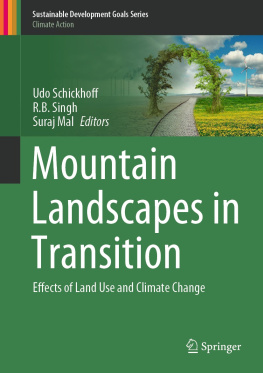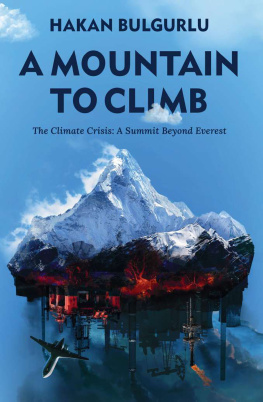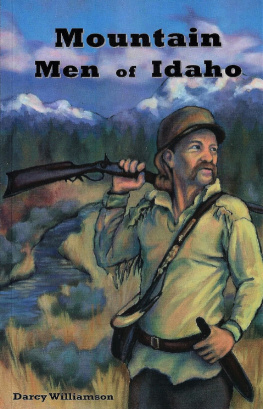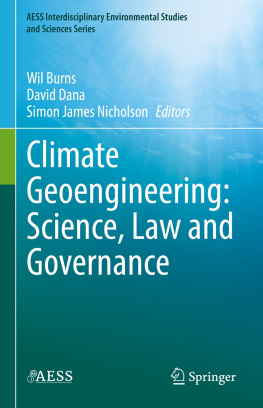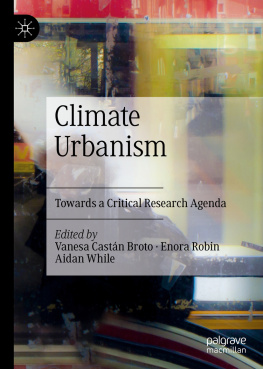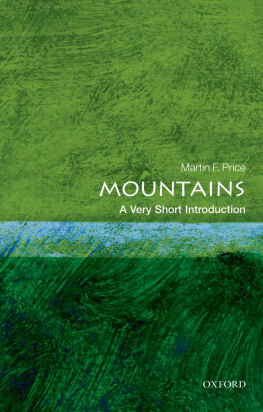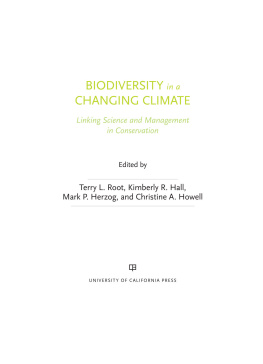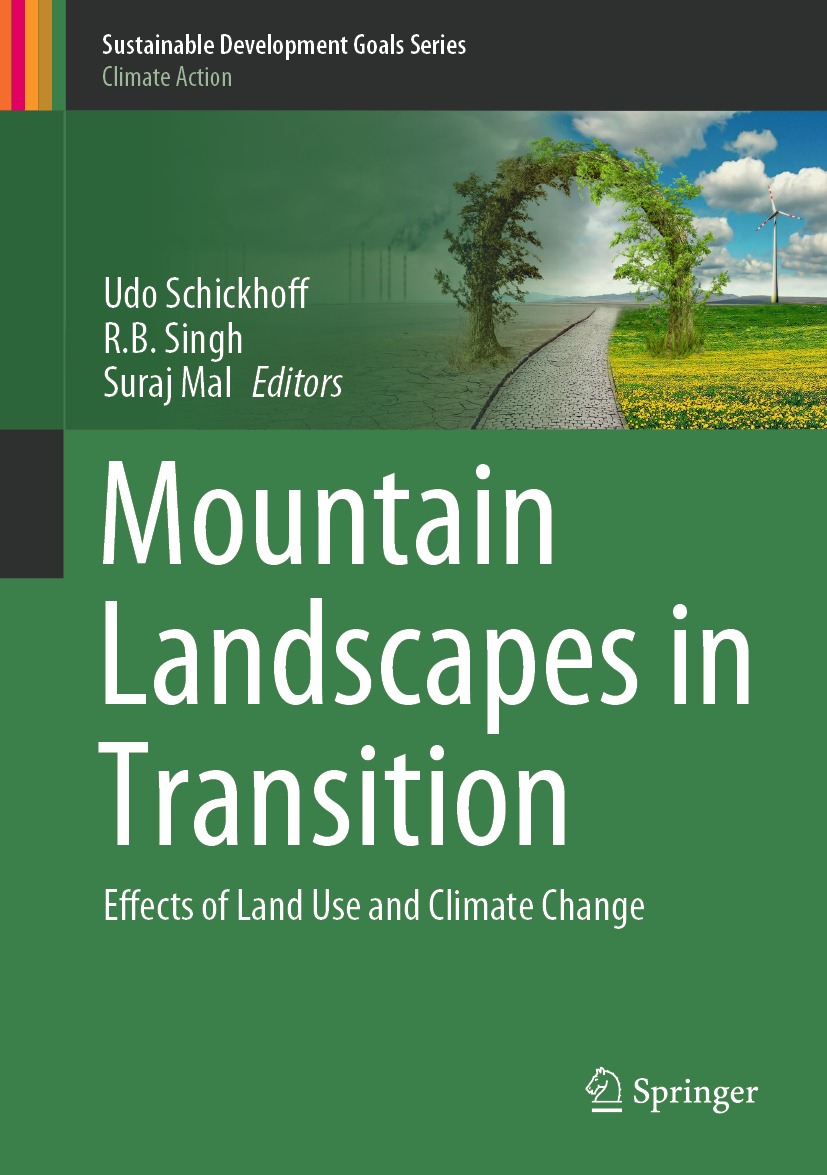Sustainable Development Goals Series
The Sustainable Development Goals Series is Springer Natures inaugural cross-imprint book series that addresses and supports the United Nations seventeen Sustainable Development Goals. The series fosters comprehensive research focused on these global targets and endeavours to address some of societys greatest grand challenges. The SDGs are inherently multidisciplinary, and they bring people working across different fields together and working towards a common goal. In this spirit, the Sustainable Development Goals series is the first at Springer Nature to publish books under both the Springer and Palgrave Macmillan imprints, bringing the strengths of our imprints together.
The Sustainable Development Goals Series is organized into eighteen subseries: one subseries based around each of the seventeen respective Sustainable Development Goals, and an eighteenth subseries, Connecting the Goals, which serves as a home for volumes addressing multiple goals or studying the SDGs as a whole. Each subseries is guided by an expert Subseries Advisor with years or decades of experience studying and addressing core components of their respective Goal.
The SDG Series has a remit as broad as the SDGs themselves, and contributions are welcome from scientists, academics, policymakers, and researchers working in fields related to any of the seventeen goals. If you are interested in contributing a monograph or curated volume to the series, please contact the Publishers: Zachary Romano [Springer; zachary.romano@springer.com] and Rachael Ballard [Palgrave Macmillan; rachael.ballard@palgrave.com].
More information about this series at http://www.springer.com/series/15486
Editors
Udo Schickhoff , R.B. Singh and Suraj Mal
Mountain Landscapes in Transition
Effects of Land Use and Climate Change
1st ed. 2022

Logo of the publisher
Editors
Udo Schickhoff
CEN Center for Earth System Research and Sustainability, Institute of Geography, University of Hamburg, Hamburg, Germany
R.B. Singh
(Deceased) Department of Geography, Delhi School of Economy, University of Delhi, New Delhi, Delhi, India
Suraj Mal
Department of Geography, Shaheed Bhagat Singh College, University of Delhi, New Delhi, Delhi, India
ISSN 2523-3084 e-ISSN 2523-3092
Sustainable Development Goals Series
ISBN 978-3-030-70237-3 e-ISBN 978-3-030-70238-0
https://doi.org/10.1007/978-3-030-70238-0
Springer Nature Switzerland AG 2022
This work is subject to copyright. All rights are reserved by the Publisher, whether the whole or part of the material is concerned, specifically the rights of translation, reprinting, reuse of illustrations, recitation, broadcasting, reproduction on microfilms or in any other physical way, and transmission or information storage and retrieval, electronic adaptation, computer software, or by similar or dissimilar methodology now known or hereafter developed.
The use of general descriptive names, registered names, trademarks, service marks, etc. in this publication does not imply, even in the absence of a specific statement, that such names are exempt from the relevant protective laws and regulations and therefore free for general use.
The publisher, the authors and the editors are safe to assume that the advice and information in this book are believed to be true and accurate at the date of publication. Neither the publisher nor the authors or the editors give a warranty, expressed or implied, with respect to the material contained herein or for any errors or omissions that may have been made. The publisher remains neutral with regard to jurisdictional claims in published maps and institutional affiliations.
This Springer imprint is published by the registered company Springer Nature Switzerland AG
The registered company address is: Gewerbestrasse 11, 6330 Cham, Switzerland
To Bruno Messerli
for inspiring leadership and lifetime dedication to the cause of mountains
To R.B. Singh
for having been an outstanding mentor, guide, and life-long advisor to his students and his great contributions to geography
Foreword
Mountains landscapes provide the sustenance of life for humanity in many different ways, with their biodiversity, incredible beauty and culture, and the resources they provide to billions of people. These landscapes are rapidly experiencing change, and we need to pay attention to the signals that mountains provide us. Indeed how humanity manages such changes in landscapes will be an important test of our time, and if we can pass, we know there is hope.
An important first step is to understand the dynamics of the socio-ecological systems in the mountains with our best science. I am pleased that in recent years, much more effort has gone into producing the science needed and that science is well-reflected in this book.
The most striking context of mountains in recent years is rapid change and transformations in mountain societies and ecosystems. We know that mountains are highly vulnerable to climate change, and the chapters in this book document these changes throughout the world. However, there are a variety of change drivers working together that add to the complexity of mountain systems. Outmigration, urbanization, globalization, and connectivity all affect mountain societies. At the same time, utilization and extraction of mountain resources are putting extreme pressure on mountain ecosystems. I am writing during the time of COVID-19, during this short time migration trends have reversed, and the side effects of COVID-19 are adding tremendous additional shocks to mountain systems.
Ultimately, it is up to societies to respond and make changes so that we continue to enjoy the benefits that mountains provide. There are responses needed at the global scale to halt biodiversity loss and slow climate change, and there are responses needed within mountain communities to adapt. In the face of rapid change and sudden shocks, building socio-ecological resilience will be a key. In developing responses, there is a need to understand the potential for mountain landscape conservation and the potential for economic development and to figure out ways in which both conservation goals meet development goals. In order to develop responses at all scales, the book outlines the impacts of climate and other changes on mountain landscapes and people and suggests solutions to move forward.
Mountains play an important role in making connectionsessential in todays world. Mountain landscapes themselves connect different types of ecosystems, and people are intimately connected to nature. To understand mountains, there is a need to connect across disciplines. To develop solutions, there is a need to connect with society and connect science with policy. Mountains provide resources to downstream areas and thus play an important role in connecting upstream and downstream landscapes. Mountain landscapes are often shared between countries and thus can play an important role to connect countries. The value of this book is that it will help us build many bridges to make better mountain connections and rise to the challenge of a changing world.

